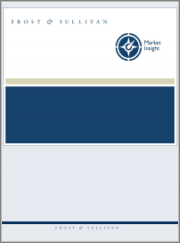
|
시장보고서
상품코드
1375383
자동차 운영체제(OS)용 승용차 OEM 전략Passenger Vehicle OEM Strategies for Automotive Operating Systems |
||||||
OEM은 향후 소프트웨어 정의 차량(SDV)용으로 자사 표준 OS를 제공할 수 있을 때까지 Tier 공급업체의 임베디드 하드웨어·소프트웨어 솔루션에 의존
자동차 업계는 큰 전환기를 맞이하고 있으며, 차량 개발 프로세스를 재정의하고 있습니다. CASE 모빌리티 컨셉에 관련된 수많은 테크놀러지를 포함하기 위해 OEM은 소프트웨어 정의 차량(SDV) 개발 어프로치의 채택을 선택했습니다. SDV 어프로치에서 OEM은 차량 수명주기를 통해 갱신 가능한 기능 및 특징을 확장하고, 정기적 및 지속가능한 매출을 얻을 기회를 제공합니다.
SDV를 달성하기 위해 OEM은 도메인 및 존에 기능을 통합하는 것으로 차량 전기/전자(EE) 아키텍처를 재설계하고 있습니다. OEM은 소프트웨어 개발, 특히 차량 운영체제(OS)로 불리는 소프트웨어 주도 특징 및 기능을 확장하는 것을 가능하게 하는 베이스 소프트웨어 플랫폼에 거액을 투자하고 있습니다.
주요 문제
- 차량 OS란 무엇인가, OEM은 그것을 어떻게 정의하고 있는가?
- 차량 OS 개발에서 OEM의 전략이란?
- 차량 OS 시장의 주요 동향은?
- OEM은 OS 개발에서 어떤 과제에 직면하고 있는가?
- 밸류체인에서 Tier I 공급업체의 역할은 어떻게 변화하는가?
- 이 시장에서 최대 성장 기회는 무엇인가?
목차
전략적 필수요건
- 왜 성장이 어려워지고 있는가?
- The Strategic Imperative 8(TM)
- 자동차용 OS업계에서 주요 전략적 필수요건의 영향
- 성장 기회가 Growth Pipeline Engine(TM) 촉진
성장 기회 분석
- 분석 범위
- 성장 촉진요인
- 성장 억제요인
- 차량 OS 시장의 주요 동향
- OS란 무엇인가?
- 차량 OS의 진화
- 향후 차량 OS : 정의와 주요 기능
- 하이레벨 범용 차량 OS 아키텍처
- 차량 OS의 유형
- 차량 OS 조달 전략
- SW 플랫폼 개발에서 OEM의 과제
- 밸류체인에서 Tier I 공급업체의 역할의 변화
- 차량 OS 에코시스템
OEM OS 개발 전략
- CARIAD VW.OS
- Hyundai Connected Car OS(ccOS)
- Toyota Arene OS
- MB.OS
- Nio
- Tesla
- Ford
- GM Ultifi
- BMW Neue Klasse
- 전형적인 OEM OS전략
- OEM OS전략로부터의 주요 인사이트
OEM OS 활동
- OEM OS 전략 벤치마킹
- OEM 벤치마킹
오픈소스 소프트웨어와 컨소시엄
- AAOS
- AAOS를 채택하는 OEM
- AUTOSAR와 AGL
- OS와 SW 개발의 협조 어프로치
OS 솔루션 개발업자
- Blackberry
- Elektrobit
- Red Hat
- Green Hills Software
- Wind River
- Vector Informatik
- OS 솔루션 벤치마킹
성장 기회 유니버스
- 성장 기회 1 : SDV가 반복적인 매출 창출을 위한 새로운 길을 연다.
- 성장 기회 2 : OS 개발에서 OEM과 SW 기업의 협업
- 성장 기회 3 : 클라우드 컴퓨팅과 기능 가상화에 의해 클라우드 기술 개발자에게 기회가 열린다.
- 정리
다음 스텝
KSA 23.11.15OEMs to Rely on Tier Suppliers' Embedded Hardware and Software Solutions Until Capable of Delivering In-house Standardized OS for Future Software-defined Vehicles
The automotive industry is undergoing a major transition and redefining the vehicle development process. To include numerous technologies tied to the concept of connected, autonomous, shared, and electric (CASE) mobility, OEMs have chosen to adopt the software-defined vehicle (SDV) development approach. With the SDV approach, OEMs extend features and function that they can update throughout the vehicle life cycle, which provides opportunities for recurring and sustainable revenue.
To achieve an SDV, OEM are redesigning vehicle electrical/electronic (EE) architecture by consolidating functions in domains and zones. They are making huge investments in software development, and specifically in a base software platform, that will enable them to extend software-driven features and functions called the vehicle operating system (OS).
Key Issues Addressed:
- What is a vehicle OS, and how are OEMs defining it?
- What are the OEMs’ strategies in developing vehicle OSs?
- What are the key trends in the vehicle OS market?
- What challenges are OEMs facing in OS development?
- How will the Tier I suppliers’ role change in the value chain?
- What are the top growth opportunities in this market?
Table of Contents
Strategic Imperatives
- Why Is It Increasingly Difficult to Grow?
- The Strategic Imperative 8™
- The Impact of the Top 3 Strategic Imperatives on the Vehicle Operating System (OS) Industry
- Growth Opportunities Fuel the Growth Pipeline Engine™
Growth Opportunity Analysis
- Scope of Analysis
- Growth Drivers
- Growth Restraints
- Key Trends in the Vehicle OS Market
- What is an OS?
- Evolution of Vehicle OSs
- Future Vehicle OSs: Definition and Key Functions
- High-level Generic Vehicle OS Architecture
- Types of Vehicle OSs
- Vehicle OS Sourcing Strategies
- OEMs' Challenges in SW Platform Development
- Change of Tier I Suppliers' Role in the Value Chain
- Vehicle OS Ecosystem
OEM OS Development Strategies
- CARIAD VW.OS
- Hyundai Connected Car OS (ccOS)
- Toyota Arene OS
- MB.OS
- Nio
- Tesla
- Ford
- GM Ultifi
- BMW Neue Klasse
- Typical OEM.OS Strategies
- Key Insights from OEM.OS Strategies
OEM OS Activity
- OEM.OS Strategy Benchmarking
- OEM Benchmarking
Open Source Software and Consortia
- AAOS
- OEMs Adopting AAOS
- AUTOSAR and AGL
- Cooperative Approach to OS and SW Development
OS Solution Developers
- Blackberry
- Elektrobit
- Red Hat
- Green Hills Software
- Wind River
- Vector Informatik
- OS Solution Benchmarking
Growth Opportunity Universe
- Growth Opportunity 1: SDVs Opening New Avenues for Repeatable Revenue Generation
- Growth Opportunity 2: Collaboration between OEMs and SW Companies for OS Development
- Growth Opportunity 3: Cloud Computing and Functional Virtualization will Open Opportunities for Cloud Technology Developers
- The Last Word
Next Steps
- Your Next Steps
- Why Frost, Why Now?
- List of Exhibits
- Legal Disclaimer



















